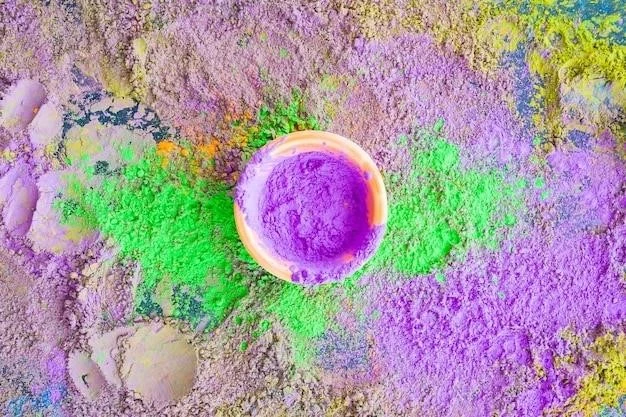For centuries‚ humans have harnessed the vibrant hues of the natural world to color their lives․ From the deep indigo of the indigo plant to the fiery red of madder root‚ plant-based dyes and pigments have played a pivotal role in art‚ fashion‚ and cultural expression․ This article delves into the fascinating world of these natural colorants‚ exploring their history‚ properties‚ and enduring appeal․
A Tapestry of Color: The History of Plant-Based Dyes
The use of plant-based dyes dates back to prehistoric times․ Archaeological evidence suggests that humans were using natural pigments to decorate their bodies and objects as early as 100‚000 years ago․ Ancient civilizations‚ from the Egyptians to the Mayans‚ developed sophisticated dyeing techniques‚ utilizing a wide array of plants and minerals to create a spectrum of colors․
In the Middle Ages‚ plant-based dyes were a cornerstone of the textile industry․ Guilds of dyers meticulously crafted their recipes‚ passing down knowledge from generation to generation․ The discovery of new trade routes and the demand for luxurious fabrics led to the exploration and exploitation of exotic plant sources‚ such as logwood and cochineal․
The advent of synthetic dyes in the 19th century significantly impacted the use of plant-based dyes․ Synthetic dyes offered greater color fastness‚ consistency‚ and affordability‚ leading to a decline in the traditional industry․ However‚ in recent decades‚ there has been a resurgence of interest in natural dyes‚ driven by concerns about the environmental impact of synthetic chemicals and a growing appreciation for sustainable practices․
The Alchemy of Color: Extracting and Applying Plant-Based Dyes
The process of extracting dyes from plants involves a combination of art and science․ Different plants require unique methods to release their colorants․ Some‚ like indigo‚ are steeped in water or fermented to extract their pigments‚ while others‚ like madder‚ are ground into a powder or boiled in a solution to release their color․
Once the dye is extracted‚ it is typically mixed with a mordant‚ a substance that helps the dye adhere to the fibers․ Mordants can be derived from natural sources‚ such as alum or tannins‚ or from synthetic sources․ The choice of mordant influences the final color and the dye’s fastness to light and washing․
The application of plant-based dyes can be done through various techniques‚ including immersion‚ painting‚ and printing․ Each method has its own nuances and produces unique effects․

A Rainbow of Possibilities: Common Plant-Based Dyes and Their Properties
The world of plant-based dyes offers a rich palette of colors‚ each with its own distinct character:
- Indigo: A deep blue dye obtained from the indigo plant‚ it has been used for centuries to create vibrant blue textiles․
- Madder: A red dye derived from the madder root‚ it has a long history and was once a vital commodity in the textile trade․
- Logwood: A purplish-black dye extracted from the heartwood of the logwood tree‚ it was widely used for dyeing fabrics and woods․
- Cochineal: A red dye derived from the dried bodies of female cochineal insects‚ it produces a vibrant crimson color․
- Weld: A yellow dye obtained from the weld plant‚ it is known for its brilliance and lightfastness․
- Woad: A blue dye extracted from the woad plant‚ it was used extensively in Europe before the introduction of indigo․
- Turmeric: A yellow dye derived from the turmeric plant‚ it is also used as a spice and has medicinal properties․

The Sustainable Future of Plant-Based Dyes
In an era defined by environmental consciousness‚ plant-based dyes are experiencing a resurgence in popularity․ Their natural origins make them a more sustainable alternative to synthetic dyes‚ which can pose risks to human health and the environment․
The use of plant-based dyes supports local economies and promotes biodiversity․ By reviving traditional dyeing techniques and fostering a deeper connection with the natural world‚ we can contribute to a more sustainable and vibrant future․
Conclusion: A Legacy of Color
Plant-based dyes and pigments are a testament to the ingenuity and creativity of human civilization․ From the ancient world to the present day‚ these natural colorants have played a vital role in shaping our cultural landscape․ As we move towards a more sustainable future‚ the magic of plant-based dyes offers a compelling path forward‚ allowing us to celebrate the beauty and diversity of the natural world while embracing the timeless art of dyeing․










